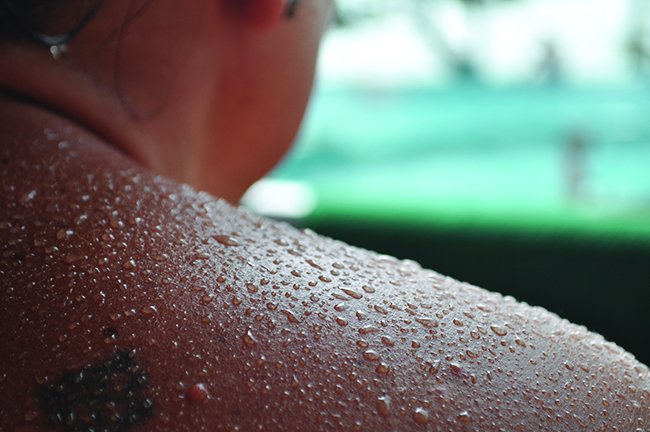| << Chapter < Page | Chapter >> Page > |
Since the normal boiling point is the temperature at which the vapor pressure equals atmospheric pressure at sea level, we know one vapor pressure-temperature value ( T 1 = 80.1 °C = 353.3 K, P 1 = 101.3 kPa, Δ H vap = 30.8 kJ/mol) and want to find the temperature ( T 2 ) that corresponds to vapor pressure P 2 = 83.4 kPa. We can substitute these values into the Clausius-Clapeyron equation and then solve for T 2 . Rearranging the Clausius-Clapeyron equation and solving for T 2 yields:
30.1 kPa
Vaporization is an endothermic process. The cooling effect can be evident when you leave a swimming pool or a shower. When the water on your skin evaporates, it removes heat from your skin and causes you to feel cold. The energy change associated with the vaporization process is the enthalpy of vaporization, Δ H vap . For example, the vaporization of water at standard temperature is represented by:
As described in the chapter on thermochemistry, the reverse of an endothermic process is exothermic. And so, the condensation of a gas releases heat:

Thus, 3600 kJ of heat are removed by the evaporation of 1.5 L of water.
28 kJ
When we heat a crystalline solid, we increase the average energy of its atoms, molecules, or ions and the solid gets hotter. At some point, the added energy becomes large enough to partially overcome the forces holding the molecules or ions of the solid in their fixed positions, and the solid begins the process of transitioning to the liquid state, or melting . At this point, the temperature of the solid stops rising, despite the continual input of heat, and it remains constant until all of the solid is melted. Only after all of the solid has melted will continued heating increase the temperature of the liquid ( [link] ).

Notification Switch
Would you like to follow the 'Chemistry' conversation and receive update notifications?